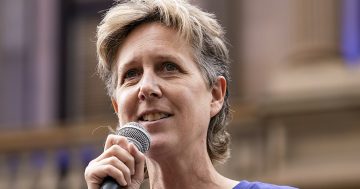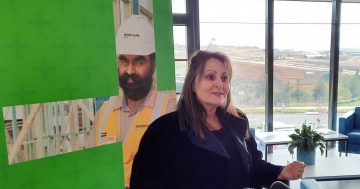Lydia Dishman* says that from not even getting past the first interview to being segregated into niche roles, older workers are still facing discrimination.

Photo: Zinkevych
“It’s always difficult to identify reasons why you do or don’t get a job,” says Florence Navarro, the chief empowerment officer of Kichocheo who works with executive teams to attract talented teams.
It could be that you’re not as qualified as other candidates, or your enthusiasm didn’t translate during the interview, the employer decided to promote from within, or, says Navarro, you just weren’t a fit for the culture for a number of reasons.
Here’s where it gets tricky.
While Navarro can see this from the perspective of a professional recruiter, she confesses that she’s wondered if the latter wasn’t the case when she herself was job hunting.
Navarro, who is over 45, admits that it’s been challenging to find a job in the last six to seven years.
One of the jobs Navarro applied for — that she felt uniquely qualified for, given her extensive experience with the UN — she lost out to a younger, male candidate.
“I had a series of interviews, and an assessment, I had a good interaction with the team,” she recalls, but she suspects it was because of her age.
Nearly two out of three workers over the age of 45 have seen or experienced age discrimination on the job, according to the results of a wide-ranging AARP survey done in 2018.
Among the 61 per cent of respondents who reported age bias, the vast majority (91 per cent) believe this discrimination is common.
How ageism is hidden
The same could be said for the tech sector, which tends to skew towards a younger workforce.
A woman who used to work for one of the largest, most recognisable tech firms spoke to Fast Company on the condition of anonymity.
“The reality is there are probably many who don’t know they are victims [of ageism] because they aren’t even making it to the first interview,” she says.
The other issue is that while age is one of the easiest demographics for employers to track, it’s rarely shared in diversity reports, according to Paradigm’s Midwest Managing Director, Erin Thomas.
Thomas points out that age gets overlooked because most employers possess fixed mindsets about the skills and roles of older vs. younger workers.
Another way to think about inclusive culture
“Boomers are 60 per cent less likely and gen Xers are 33 per cent less likely to be hired compared to their representation in the workforce,” says Thomas.
In turn, she says, “this generational blindspot has become reinforced and grown because older workers haven’t been given opportunities to defy negative assumptions about what they’re able to do.”
Organisations in the tech field with older workers usually have them in more senior management roles.
Julia Kanouse, the CEO of the Illinois Technology Association, says that inclusion is key to making older workers feel like they belong at lower level jobs.
Kanouse says a recent hire — a woman in her late-forties with children, felt extremely unwelcome at the organisation.
“Although she may not be who you think of as an “older” worker, she felt out of place and had trouble connecting with the company culture,” says Kanouse.
She was ashamed to talk about her kids and was uncomfortable putting pictures of them up in her workspace.
The social events, the language used in the office, the informal water cooler talk all contributed to her sense of not belonging, and she left the organisation within six months, Kanouse says.
“An organisation’s culture needs to be welcoming to people of all ages and stages of life, regardless of the demographics,” says Kanouse.
“Whether old for your culture is 45 or 75, the key benefit of integrating an older worker is the life experience they bring.”
She says employers looking to hire older workers need to be prepared to adjust how they think about getting work done.
“Whether they have children at home, ageing parents or just can no longer put in a 14-hour day,” she says, “and provide the kinds of benefits that are going to attract and, in the long run, retain your target workforce.”
Aubrey Blanche, global head of diversity and belonging at Atlassian, says that in addition to fostering a culture that makes it safe to talk about the impact of ageism, they emphasise growth journeys and not just career paths.
“This means the focus is less on advancing up the ladder (although that’s an option) and more about what skills and experiences you’re gaining from your role,” she says.
Blanche contends that this creates much more flexibility for people in all age groups, but can be especially helpful in combating the idea that you have to be older or more experienced than someone working at a higher level.
“This has ultimately allowed us to improve the representation of teammates over 40 from 12 per cent to 18.7 per cent over the last three years,” she points out.
According to Katie Burke, HubSpot’s chief people officer, the company launched a Returners Program in Dublin over the past 18 months, “specifically to welcome experienced professionals back to the workforce after a break for child or elder care.”
Burke says the average time out of the workforce ranged from two to 12 years.
Carin Taylor, chief diversity officer at Workday, says her company also implemented a returnship program in September.
“During this four-month paid program, we saw experienced professionals get the training, support, and mentorship needed to relaunch their careers,” she says.
Although she acknowledges that it can be intimidating for older workers to jump back in, Taylor believes they can bring a lot.
“The skills they’ve garnered during their time away include everything from complex problem-solving to the ability to adapt quickly, to strong interpersonal and communication skills,” she says.
Returnship participants can have a higher level of engagement and loyalty to their employers.
“Our first cohort of participants resulted in a 90 per cent conversion to full-time hires.”
Taylor emphasises the need for age not to be a factor in hiring.
“Assuming that everyone needs to have a traditional career path are days of the past,” she says, “and employers are beginning to realise that skills are acquired in many different ways.”
* Lydia Dishman is a regular contributor to Fast Company. She tweets at @LydiaBreakfast.
This article first appeared at www.fastcompany.com.











